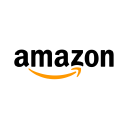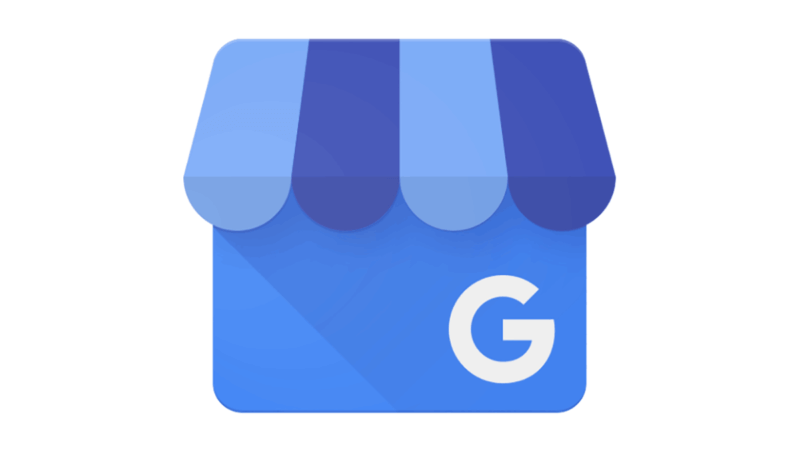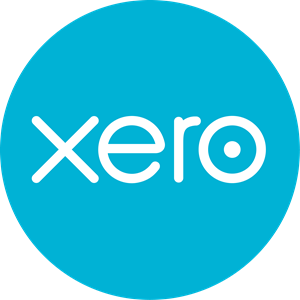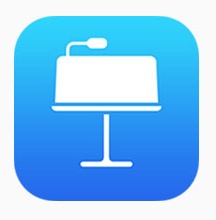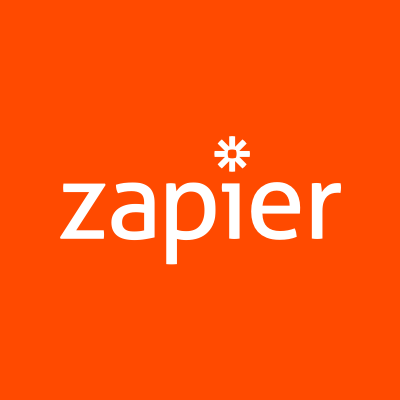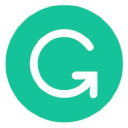How I Created A Software To Manage Gyms And Reached $100K/Month In Revenue
Hello! Who are you and what business did you start?🔗
Hey everyone, I'm Dan Uyemura - CEO of PushPress.
PushPress is a modern boutique gym management system. Our mission is to help gyms manage and grow their business more efficiently than their competition, allowing them to win out their local market.
To date, we’ve bootstrapped our business to over $100,000 MRR. We’re especially proud to be the only platform in our space who serve the best interests of our clients first, having no investors to answer to.

What's your backstory and how did you come up with the idea?🔗
The story of PushPress actually predates my involvement in fitness in any way. I was a coder, working for startups in the early 2000s. “Startup Culture” back then was unlimited free sodas and nightly catered dinners. Both of which lead me to be about 30 pounds overweight by 2008.
In late 2008, I joined a CrossFit gym looking to shed some weight as fast as possible. While there, I was exposed to their gym management platform which was an absolute nightmare to use. This platform was the 800-pound gorilla in the space, they were operating on antiquated technology, seemed too big to move quickly, and their customer experience ended up making gyms look terrible.
Doing a deeper competitive analysis, I realized that every other solution in the market was basically replicating what the market leader was doing. There was very little innovation in the space.
In other words, I was looking at an industry waiting to be disrupted.
The first step was to form a team of other highly engaged Internet entrepreneurs who were also deeply interested in Fitness. We then opened a gym to understand what it was like to walk in the shoes of a gym owner.
From what we learned in our first 9 months of gym ownership, PushPress was born as a product.
Marketing beats product, almost all of the time. If we had focused more on marketing, distribution, and sales we would have grown much faster in our early years.
Take us through the process of designing, prototyping, and manufacturing your first product.🔗
I cannot emphasize enough how critical opening our own gym was to the vision, design and eventual product. Looking across the landscape of our competition, I’m pretty certain most of our competitors did not do this. It’s apparent in the execution and delivery of their product.
Two huge decisions we made early that really helped us speed product to market were:
- Deciding to buy the commercial rights to an open-source payment gateway and build the gym management pieces on top of it.
- Jumping on board Stripe Connect as our payments platform instead of building on top of more established platforms of the time (Authorize.net)
Both of these decisions seemed risky at the time but paved the way for us to focus our energies on the things our future customers would find value in. These decisions also allowed us to outsource key infrastructure items like billing to a company that focused 100% on providing payments as a service.
The early days were a lot of hack-a-thons, which was difficult because our founders were all in their mid 30’s with families and kids at the time. I recall having many multi-night sessions where we would lock ourselves in at my apartment and work around the clock to crank out our MVP.
At inception, we had 5 founders and during this time, two founders decided they didn’t want to continue on, and we bought them out. At that time, it seemed inconceivable to me to buy out people from a company that had zero revenue and zero value.
Thankfully one of my co-founders was savvier than I was - because he did everything by the book, paid them a nice payment at the time, and had everything buttoned up legally and formally. I recall balking at the idea of paying good money for a clean buyout, and my partner told me to go watch The Social Network.
These are the kind of lessons you learn either by experience or by working with people who have that experience; thankfully my partner knew how to handle this situation correctly.
Describe the process of launching the business.🔗
The three remaining founders financed the startup costs of PushPress ourselves. Since we had no revenue and were self-financed, we were very cost-conscious of every decision early on.
All of us had full-time jobs on top of owning the gym we opened. We worked literally anytime and anywhere we could make it happen. A local Coffee Bean was our de facto “office” for much of the summer of 2012. We would meet there and work for 2 to 4 hours every day after work.
Come early 2013, we launched PushPress using my gym as our first client. We had a drop-dead date to go live and make the flip for the gym and I remember pulling an all-nighter that night, bouncing from a Starbucks to a Denny’s and eventually launching PushPress from a 24-hour donut shop at about 4:45 am.
We built PushPress from a product first standpoint. If we built a better mousetrap, we were sure customers would flock to us. This is the biggest mistake I would fix if I could do it all over again.
Marketing beats product, almost all of the time. Being product first founders it took us about 3 years to really understand this. If we focused more on marketing, distribution, and sales we would have grown much faster in our early years.
Instead of pitching to investors, we chose to solve real problems for real customers and learn from them.
Since launch, what has worked to attract and retain customers?🔗
There’s a lot of cliches circulating about how to start and grow a business. You’ve heard them all.
I’m going to stay away from all of them, and actually talk about something that seems to be overlooked in the startup world and worked wonders for us.
Value-Add Giveaway Marketing
At PushPress, we knew we had a product that was going to win, we just needed to break into the market and get our name known. Doing that one client at a time would be impossible, so we needed to make bigger splashes to kick start things.
To do this, we thought of two things that could benefit the gym owners, produced them at some effort and minimal cost and gave them away as a free resource to the community.
Fubarbell x PushPress Olympic Lifts Poster
The first thing we did was partner up with one of our early adopters, who was reaching celebrity status in the CrossFit community and make a highly unique and engaging poster.
A poster with this level of detail and infographic feel hadn’t been done before.
We gave this poster away and marketed it for gym owners to put up at their gyms for their customers to reference.

PushPress Timer
The next thing we put out as a free resource to our community was a free timer.
Most boutique gyms use timers to keep track of workouts or classes, and there wasn’t one on the market at the time that looked as nice as we wanted and was easy to operate.
So we built a timer a gave it away for free.

Both of these efforts early in our life as a company really paid off in terms of getting some eyeballs on our company early.

After launching the poster, we tripled our average monthly traffic. After launching the timer, we doubled. In net, those two products put us on the map and kickstarted the awareness of PushPress as a company to the community.
I can only wish we took those wins and ran with them, but to be honest, as I stated above, we missed on continuing to focus on marketing. We focused on product growth and stopped doing much marketing. The result, as you can see, is a predominantly nice, stead, predictable (but slow) growth curve.
How are you doing today and what does the future look like?🔗
The future of PushPress looks amazing. We are in a space that’s begging to be disrupted. Being bootstrapped, we own our destiny and have the option of choice. Our revenue is growing steadily, and we’re reinvesting 100% of it to position to capture this market.
One thing that’s great about our business is our core MRR isn’t our only revenue stream. We have established a few different revenue streams which are growing along with our client base. Some of these are derived from value-added services we provide to our clients (expansion revenue) and some of these are derived from partnerships we have established.

When you doubling your business each year without spending any time on optimizing your business, you know you have serious product-market fit. We’ve now grown our team to a point where we will begin optimizing every aspect of our business, and we’re very excited to see how this will impact our 2020.
On the heels of some talks with Patrick Campell, we are experimenting with moving our lead funnel into a freemium model. While we’re pretty early in the cycle with this experiment, the early data shows it should be very disruptive to space, and something our client base is very interested in.
As an added benefit, if it takes hold like we think it will, it will force our competitors to react. Putting our competition on their heels and making them react to our moves is something I personally love doing.
If you want to get the most out of any education you do, you have to be in a distraction-free environment. If you don’t have that place, go walk/run for 30 minutes and see how much you absorb.
Through starting the business, have you learned anything particularly helpful or advantageous?🔗
Distribution Rules
Recently I saw someone tweet: “First-time founders focus on the product. Second-time founders focus on distribution” -- edit - it was @shl via @justinkan
This could not ring more true to me. We believed if we built a product that was hands down the best for boutique gym owners, we could win the market. We were wrong. Having to compete against marketing and sales-based organizations, we have experienced and come to understand that at the end of the day, the best product doesn’t always win.
Focus on Building A Business
Building a business is all about choices, as we only have so many hours in the day. Early on, we decided we didn’t want to invest the time required to find funding - and sink all that time into product development.
When we started this, the concept of “bootstrapping” was not common. We always felt the idea of spending a ton of time and energy pitching an idea to investors early in business seemed backward. Instead, we chose to solve real problems for real customers and learn from them.
We stumbled upon the concept before it became en vogue, but optionality is a massive asset we hold now. Focus on building a real business, with real earnings, solving real problems and the rest will solve itself.
What platform/tools do you use for your business?🔗
I wrote another article for indiehackers about this topic last week, and the list is tremendous. The bottom line is, as a modern data-driven operation, each component of your business will come to need (then rely on) on processes to scale. These processes are universally supported by the software.
Hubspot, Slack, Stripe, Datadog, Google for Business, Zoom, Intercom, Zapier, Xero, Profitwell, Acuity, Github… these are just some of the key platforms and tools we use daily to make PushPress happen.
What have been the most influential books, podcasts, or other resources?🔗
Similar to the question above, I think my answers will be pretty non-revolutionary. I listen to just about every podcast and book I can get my hands on in any spare moment I can.
Instead of talking about what I consume, I’m going to instead talk about how I consume it. I think it’s more interesting of a concept, and it’ll benefit every single founder out there.
I started running last year, and I listen to everything I can while I’m running. I found running gives me a solid 30 - 60 minutes of alone time.
It’s just me, the trails/road, my thoughts, and someone whispering advice in my ear. There are zero distractions when you’re out on the run, I won’t even answer texts, emails, or tweets.
If you want to get the most out of any education you do, you have to be in an environment where you’re completely distraction-free. Focused. If you don’t have that place, go walk/run for 30 minutes and see how much you absorb.
Advice for other entrepreneurs who want to get started or are just starting out?🔗
Any piece of advice I can offer here would be massively cliche, but they’re cliche for a reason. To that, I’m going to offer two. One that you’ve heard before, and one that will make the first one actually work:
Advice #1. Get used to failing.
I can’t stress to people I talk to enough to think big and not be afraid to fail. Fear of failure is crippling, and it’s real. If you’re seriously thinking of starting a business, you’re going to fail. Daily. Just get used to it.
Advice #2. Put processes in place to learn from failure.
Let’s be honest, if you only follow my advice #1, you’re likely going to lose your battle. You need to actively have a process in place to have a long hard look at success and failure, understand the underpinnings of each, and learn from them.
Doing so will make your successes compound in results, and turn your failures into an educational experience.
Are you looking to hire for certain positions right now?🔗
We are always looking to bring on the best players to help launch our growth charts even more upwards! If I had to pick just one position I needed to fill today, it would be a legit Director of Marketing.
(I say legit because we’ve encountered too many…. Illegitimate ones!)
Pay is competitive, and remote work is a-ok. We prefer people who love fitness and understand the fitness space.
Where can we go to learn more?🔗
- Website
- Email: Want to reach me directly? dan@pushpress.com or @hookgripper on Twitter.
If you have any questions or comments, drop a comment below!

Download the report and join our email newsletter packed with business ideas and money-making opportunities, backed by real-life case studies.

Download the report and join our email newsletter packed with business ideas and money-making opportunities, backed by real-life case studies.

Download the report and join our email newsletter packed with business ideas and money-making opportunities, backed by real-life case studies.

Download the report and join our email newsletter packed with business ideas and money-making opportunities, backed by real-life case studies.

Download the report and join our email newsletter packed with business ideas and money-making opportunities, backed by real-life case studies.

Download the report and join our email newsletter packed with business ideas and money-making opportunities, backed by real-life case studies.

Download the report and join our email newsletter packed with business ideas and money-making opportunities, backed by real-life case studies.

Download the report and join our email newsletter packed with business ideas and money-making opportunities, backed by real-life case studies.

